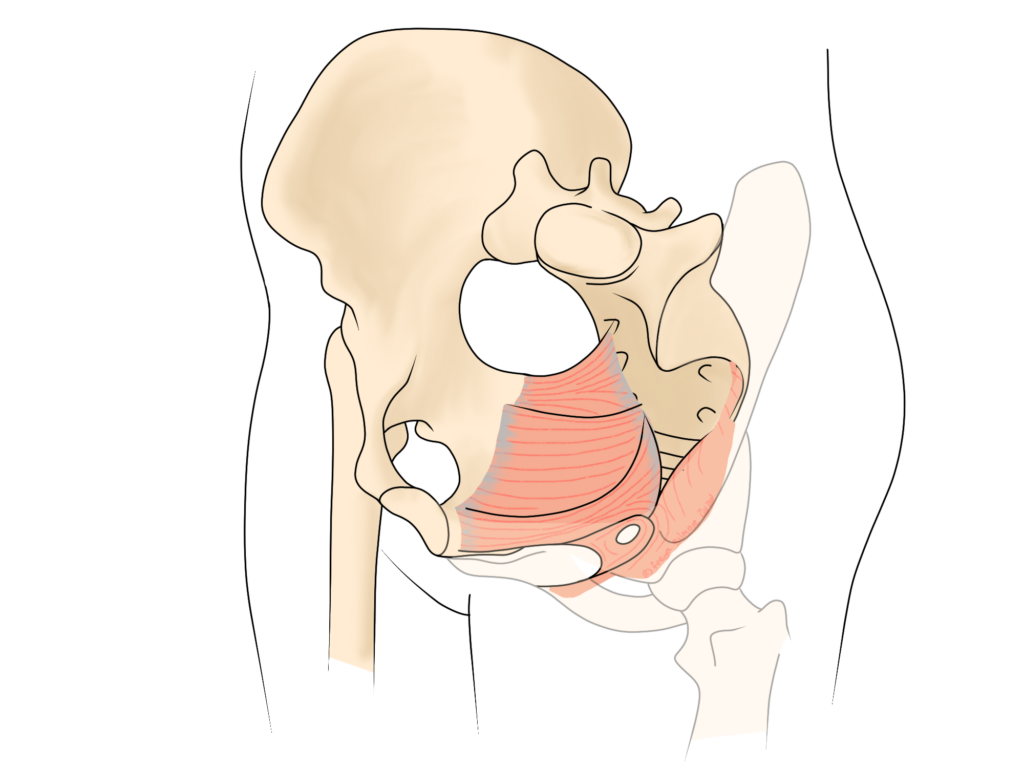The pelvic floor is integral for continence, and plays a significant role in the function of the lower back. But it’s an area often overlooked or ignored. Sometimes that’s because we assume our symptoms are normal, and just something we have to get on with. Other times it’s because we don’t know who can help.

Back Pain and the Pelvic Floor
The lower back and pelvic floor work together to stabilise the pelvis and support the abdomen and its contents. Patients with weak or tense pelvic floors may present with back or hip pain that doesn’t seem to follow a particular pattern and may be hard to pin down. And the root cause may not be something that feels relevant to your consultation, but do mention anything that might possibly have a link. When the pelvic floor muscles struggle, the gluteal muscles might try to assist. This can result in sciatica, lower back tension and discomfort, or limited movement in a range of joints. Which in turn cause further issues. You may have been given strengthening advice in the past- mention this too if you feel like it’s not serving you, because excess tension can present as much of a problem as weakness for some people.
The Pelvic Floor during and after Pregnancy
The pelvic floor is a sling of muscles at the base of the pelvis. It’s not dissimilar to the diaphragm sitting under the lungs. Even before considering the effect of hormones in pregnancy, it’s staggering to thing of the weight of a uterus, placenta, and baby resting on a net of muscles. They have to be strong to take the weight, and maintain continence during pregnancy. Too much demand can cause injury and weakness, as can birth itself (whether or not any tearing was noted externally). Although this is common, it doesn’t mean you have to accept it as your fate.
Symptoms of pelvic floor dysfunction after birth include:
- urinary incontinence
- fecal or flatulent incontinence
- pain during sex
- a feeling of heaviness or dragging
These will not always present before you’re discharged from the midwifery team, and getting back into the system can be tricky. But the first step in addressing the problem is to know that something is wrong. The muscles can tense up in response to weakness, but also trauma, whether pregnancy related or otherwise. Do seek help if this resonates with you.
Male and Female Musculature
It sometimes surprises male patients to learn that they too have a pelvic floor. Anatomically, it’s very similar to the female muscles. In both sexes, these muscles play a role in urinary and fecal continence, so weakness or injury can lead to incontinence. Osteopaths have external techniques available to examine and treat these muscles in a minimally invasive way appropriate for both men and women. With the information gained from your case history and examination, Beverley can diagnose the problem and develop a management plan. This might involve exercises or referral to a specialist if needed. Exercises to relax the muscles can be as important as strengthening, and sometimes making small changes to your bladder or bowel habits can make a big difference too.
As a general rule, if you suffer with “a weak bladder”, you need to avoid either demanding too much by holding urine for too long, but also avoid going “just in case” and encouraging excessively frequent emptying.
Click here to make an appointment with Beverley in Umm Suquiem
